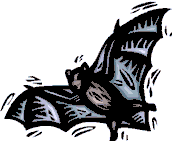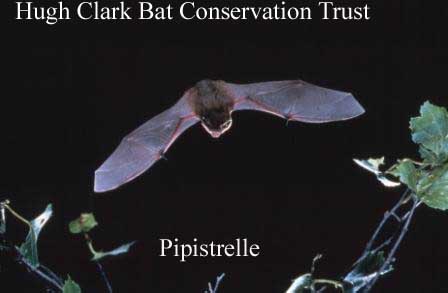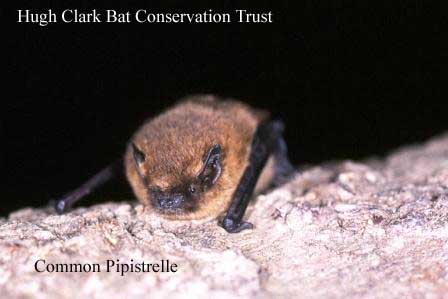Welcome to the World of Bats
All UK bats and their roosts are protected by law. It is illegal to harm or disturb or deliberately disturb their roosts without first seeking advice from your local Statutory Nature Conservation Organisation.
Bats are mammals and as such are warm blooded, have fur or hair on their bodies and feed on their mother’s milk for the first few weeks of their life. However bats are the only mammals that are capable of true flight.

Bat’s wings can be likened to our arms and hands but have extra long fingers with skin stretching between the body and fingers to form the wing membrane. Only the thumb remains free which is used for grooming.
Seventeen species of bat have been identified in the UK, four of which have been seen in the country park.
The smallest bat found in the UK, and the country park, is the pipistrelle which is around 4cm long and weighs around 5g. (less than the weight of a £1 coin).
The largest bat species in the UK, and the country park, is the noctule with a body length of 6-8.2cm and a weight of 19-40g.
This is still small compared to the world’s largest bat, the Kalong or Javanese flying fox, which is a fruit eating bat found in East Asia, which has a wingspan of almost 2 metres!
All native UK bats eat insects and the majority catch and eat them in mid air. Amazingly the tiny pipistrelle can eat over 3000 insects in one night!
Bats are not blind but during the hours of darkness they fly using echolocation i.e. locating objects by echo. They emit high pitched sounds, which us humans cannot hear, and instinctively measure how long it takes for the noise to bounce back from the objects in their way.
Bats don’t make nests but choose places to roost such as hollow trees, caves or buildings. UK native bats hibernate in winter as there are few insects to be found at that time of year. To use less energy their heartbeat, breathing rate and body temperature drop.
The four bats species identified in the country park are:
|
Species |
Whiskered |
Noctule |
Pipistrelle |
Brown Long-Eared |
|
Life span (yrs) (max recorded) |
24 |
12 |
16 |
30 |
|
Body length(cm) |
3.5-4.8 |
6-8.2 |
3.5-4.5 |
4.2-5.3 |
|
Wingspan(cm) |
20-25 |
32-45 |
19-25 |
24-28 |
|
Weight(g) |
5-9 |
19-40 |
3-8 |
5-12 |
|
Description |
Upper-dark brown Under-greyish white Face, ears, wings -dark grey/black |
Fur-short golden brown Ears, nose, wing membranes - dark brown |
Upper - dark red/brown Under -yellow/brown Ears, nose, wing membranes -black/brown |
Fur - buff brown Face -pink brown Ear&wing - light grey brown |
|
Diet |
Dusk – midges, beetles & moths |
Early, often before sunset -moths, beetles & large flying insects |
Early, sometimes before sunset - moths, gnats & small insects |
Moths in flight caterpillars, spiders from leaves/twigs |
|
Flight |
Fluttery and slow |
Fast & high above ground |
Rapid, agile about 5-10m above ground |
Slow fluttering – often close to ground |
|
Reproduction |
Mate while in hibernaculum. Young born mid June |
Mate Aug-Oct 1 young July |
Mate Aug-Sept Usually 1 young June/July |
Mate autumn 1 young mid June |
How a bat detector works 
Human’s hearing range is between 20Hz and 15-20kHz. Some bats are able to hear sounds at up to 110 kHz. To be able to “hear” bats a bat detector can be used. The bat sounds are detected by an ultrasonic microphone and mixed with a high frequency oscillation in the bat detector. This produces sounds which are the sum and the difference of the two frequencies eg. If the bat detector is set to 50kHz and a pipistrelle is heard whose sound is at a frequency of 45kHz, the sum 95kHz can’t be heard but the difference 5kHz can be. The frequency of the bat detector can be adjusted and it is possible to distinguish the different bat species by the frequency of their calls.
Test your knowledge with our interactive Bat Quiz
For more information on bats try The Bat Conservation Trust